F. LÉVY
Jusqu’à peu
für viermanualige Orgel, vierhändig gespielt


Jusqu’à peu
für viermanualige Orgel, vierhändig gespielt

Pour orgue à quatre manuels joué à quatre mains Für viermanualige Orgel, vierhändig gespielt
For four-manual organ, played four-handed (2022)
Kompositionsauftrag der Kulturplattform St. Martin e. V. für das Festival BRANDNEU – Europäische Wochen für neueste Orgelmusik, gefördert durch die Ernst von Siemens Musikstiftung
Susanne Kujala & Eckhard Manz gewidmet
Uraufführung:
25. Juni 2022, Festival BRANDNEU, Kirche St. Martin, Kassel
Susanne Kujala & Eckhard Manz
(Dauer: ca. 17 Minuten)
The piece was written for the Rieger fourmanual organ of the of St. Martin episcopal church in Kassel. It is written for two musicians (Mus. I, Mus. II).
Das Stück wurde für die viermanualige Rieger-Orgel der Bischofskirche St. Martin Kassel geschrieben.Das Stück muss von zwei Musikern (vierhändig) interpretiert werden (Mus. I, Mus. II).
La pièce est écrite pour l’orgue Rieger à quatre manuels de la cathédrale épiscopale St-Martin de Cassel. La pièce doit être interpretée par deux musiciens (Mus. I, Mus. II).
Characteristics of the St-Martin organ for the interpretation of the piece (to be adapted for an interpretation on another organ) / Merkmale derSt.-Martins-Orgel für die Aufführung des Stücks (muss für die Aufführung auf einer anderen Orgel angepasst werden) / Caractéristiques de l’orgue St-Martin pour l’interprétation de la pièce (à adapter pour une interprétation sur un autre orgue):
1) 4 Manuals and one pedalboard / 4ManualeundPedale / 4Manuels et un pédalier
. SW.II: Schwellwerk II / Récit II
This manual has a double keyboard, the upper keyboard a quarter tonehigher. The quarter tones are indicated in the score by diamonds (and if no indication, they sound a quarter tone higher).
. SW.I: Schwellwerk I / Récit I
. Pos.: Positiv / Positif
. HW.: Hauptwerk / Grand orgue
Ped.: Pédalier
Dieses Manual verfügt über eine Tastatur mit oberen Vierteltönen. Vierteltöne sind durch Rauten gekennzeichnet (und wenn keine Vierteltöne angegeben sind, klingen sie einen Viertelton höher).
Ce manuel dispose d’un clavier en quart de tons supérieur. Les quarts de ton sont indiqués par des losanges (et si aucun quart de ton n’est indiqué, ils sonnent un quart de tonau dessus).

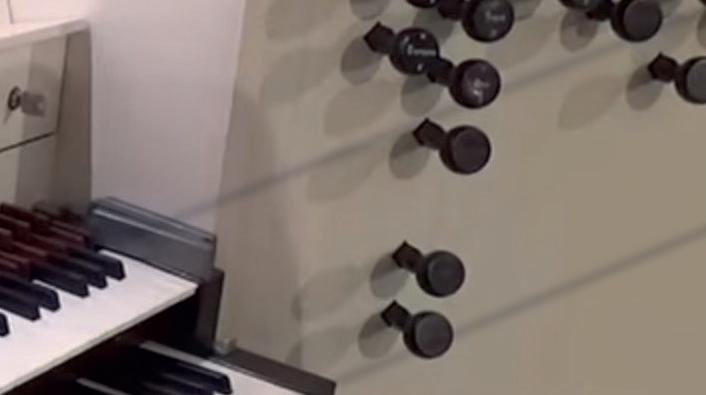
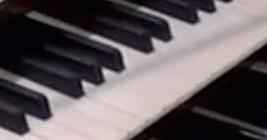



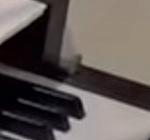

Schwellwerk II (with ¼ keyboard above)






Positiv


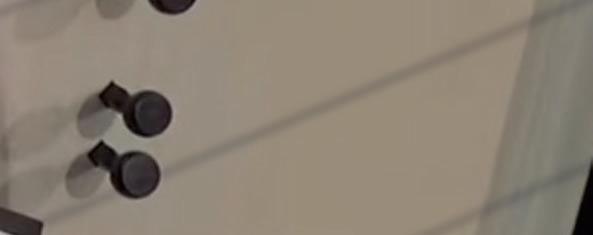










Schwellwerk I Hauptwerk





- Several parts, especially part B, require playing from one manual to another / Mehrere Teile, insbesondere Teil B, erfordern das Spielen von einem Manual zum anderen / Plusieurs parties, notamment la partie B demandent de jouer d’un manuel à l’autre.


- Weights are required to press keys / Gewichte werden benötigt, um Tasten gedrückt zu lassen / Des poids sont requis pour laisser des touches enfoncées
2) Organ Stops with mechanical action / OrgelregistermitmechanischerTraktur/ jeux d’orgue à action mécanique
Registrations should be mechanical in order to select manually the level of pressure or trigger it by programmed pressets. The registration appear in the partition either above the manual system or at the top of the complete system, in a box. They are indicative.
Die Orgelregister müssen mechanisch sein, mit der Möglichkeit, sie entweder manuell durch Auswahl der Druckstufe zu betätigen oder durch programmierte Pressets auszulösen. Sie erscheinen in der Partitur entweder über dem inkriminierten Manualsystem oder oben im System in einem Kasten. Sie dienen als Richtwerte.
- Indication for the register-stops / Anzeige für die Orgelregister / indication pour les registres :


Les registrations doivent être mécaniques avec la possibilité de les actionner manuellement en sélectionant le niveau de pression, ou en les déclencheant par des pressets programmés. Ils apparaissent dans la partition soit au dessus du système de manuel incriminé, soit en haut du système, en encadré. Ils sont indicatifs.

- Action and pressure level / Handlung und Druckstufe / action et niveau de pression:



- Alternate the right and left hands. The alternation is logically organised, so that you only have to move the hands up/down on the different stops (adapt for another organ)


Wechseln Sie zwischen der rechten und der linken Hand ab. Der Wechsel ist logisch aufgebaut, so dass Sie die Hände auf den verschiedenen Registern nur auf- und abbewegen müssen (für eine andere Orgel anpassen)
Alternez la main droite et la main gauche. L'alternance est organisée logiquement, de sorte qu'il suffit de monter/descendre les mains sur les différents jeux (adapter pour un autre orgue).
3) Pression of air / Luftdruck / Pression de l’air
- The pressure of each manual and Pedal can be controlled independantly through pedals, on underpressure (<100) or overpressure (>100). This feature is however not so important for this piece.

4) Dynamics (by moving panels) controlled by pedals. This feature is important for the D part (long glissando by fade in/fade out between positive and SWII).
Der Druck jedes Manuals und des Pedals kann unabhängig durch Pedale, auf Unterdruck (<100) oder Überdruck (>100) gesteuert werden. Diese Eigenschaft ist aber für dieses Stück nicht so wichtig.

Pedalgesteuerte Intensität (durch bewegliche Paneele). Diese Eigenschaft ist wichtig für den D-Teil (langes Glissando durch Fade in/Fade out zwischen Positiv und SWII)
La pression de chaque manuel et du pédalier peut être contrôlée indépendamment par des pédales sur la taille, en sous-pression (<100) ou en surpression (>100). Cette caractéristique n'est cependant pas si importante pour cette pièce.
Dynamique controlée par une pédale (par panneaux amovibles). Cette caractéristique est importante pour la partie D (long glissando par fade in/fade out entre positif et SWII).

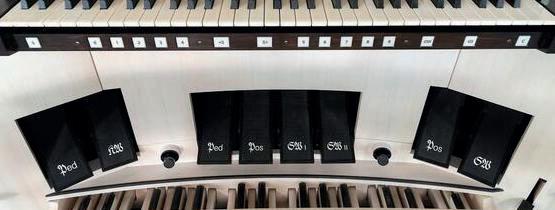
5) Detailed characteristics of the St-Martin organ / DetaillierteEigenschaftenderSt.-Martin-Orgel / Caractéristiques détaillées de l’orgue St-Martin
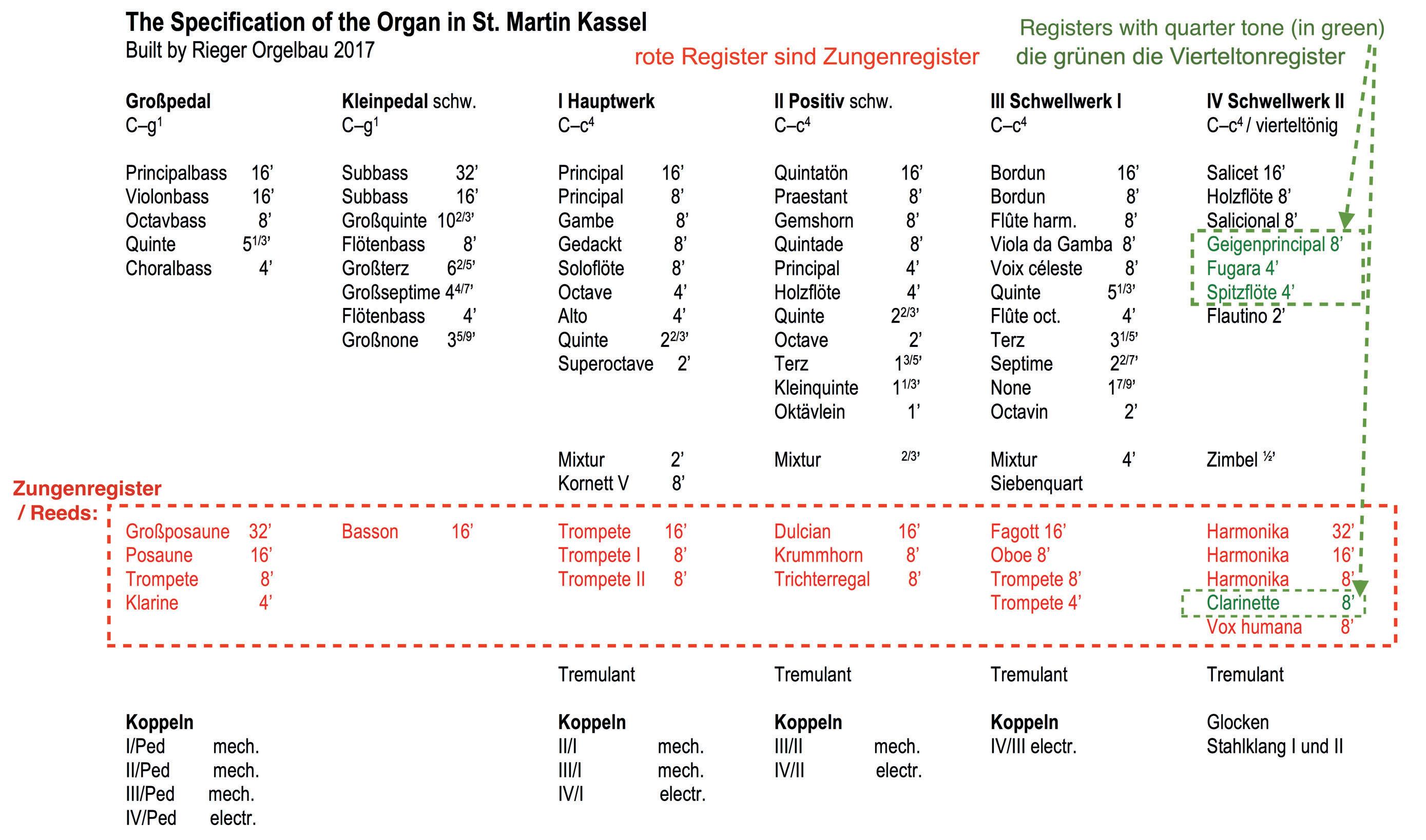
Pour orgue à quatre manuels joué à quatre mains Für viermanualige Orgel, vierhändig gespielt For four-manual organ, played four-handed
più presto (se possibile ca. q = 88 -104)
Pull/push the stops quickly. Alternate the right and left hands. The alternation is logically organised, so that you only have to move the hands up/down on the different stops. As staccato as possible, both musicians in perfect homorythmy. For another organ: same principle
Fugara 4' Salic. 8' Geigenpr. 8' Salicet 16' w
Pull/push the stops quickly. Alternate the right and left hands. The alternation is logically organised, so that you only have to move the hands up/down on the different stops. As staccato as possible, both musicians in perfect homorythmy. For another organ: same principle
40%
Ritmico {q=c102}
All registers: dolce with aliquote, a little inharmonic, but clear sound -we must clearly hear the different pitchs Eb- [with or without reeds? Tempo too fast in the church?]
SWII 8': for instance: Geigenprinc. 8' + Fugara 4': 40%
SWI 4': for instance: Flute oct 4' 50%; Terz 3 1/5' + None 1 7/9': 30%
Pos. 8': for instance: Gemshorn 8' + Quintade 8': 50%; Terz 1 3/5' + Kleinquinte 1 1/3': 30%
HW 16': for instance: Principal 16' + Gedackt 8' + Quinte 2 2/3' + Superoctave 2': 40% Ped.: 8' dolce (f.i. Flötenbass 8')
HW (I): all pressets tacets.
HW (I) coupled with small organ (microtones)
Man.II: Octava4'
Harmonika 8' (only the non quarter-tones notes) + Geigenprinc 8'
Page intentionally left blank.
SWII: 8' reeds (Clarinett 8')
SWI: 8' (voix céleste 8' + Flute 4' + None)
Pos.: 16' (Dulcian 16'+ Gernshorn 8')
HW: 4': (Gedackt 8'+ alto 4') Ped. 32': (grossposaune, mp)
SWII: 8' big (Geigenprincipal 8' + Fugara 4'+Spitzflöte 4')
SWI: 16' aliquote (Bordun 16' + Flute 8' voix céleste 8' + None 1 7/9')
Pos.: 4' Principal (Principal 4' + Hozlflöte4'+Octave 2' + Octävlein 1')
HW 4' (flute 4'+: Octave4' + Alto 4'+Quinte) Ped 32' (Grossposaune 32' + Posaune 16')
Violente, scintillante, regolare (q = c 60)
204 Sound Climax 1 . SWII: 32' big (Harm. 32'+ Harm 16' +Clar. 8'+ Fugara 4') . SWI: 8' aliquote (Fl. Oct. 4' [100%]+ Octavin 2' [100%] + Tr. 4' [50%] + Oboe 8' [50%] + Mixt. 4' [50%] + Siebquart [50%]+ Septime 2' 2/7' [50%]) . Pos.: 8' Principal (Trichterregal 8' + Holzfl. 4' + Gemshorn 8' + Quintade 8' + Quinte 2 2/3' [50%]+ Terz 1 3/5' [50%] + Kleinquinte 1 1/3' [50%] + Octavlein 1' [50%]) . HW 16' aliquote (Tr. 16'+ Kornett 8' + Octave 4' + Quinte 2 2/3'+ Superoctave 2') . Ped 8' aliquote (Tr 8+Choralbass 4' + Grossnone 3 5/9'')
Sound Climax 2 . SWII: 8' (Clar. 8'+ Fugara 4' + Spitzflöte 4' + Flautino 2' [50%]) . SWI: 4' aliquote (Fl. Oct. 4' + Octavin 2' + Tr. 4' [50%] + Mixt. 4' [50%] + Siebquart [50%]+ Septime 2' 2/7' [50%]) . Pos.: 8' Principal (Krummhorn 8' [100%]+ Gemshorn 8' [100%] + Principal 4' [50%] + Oct. 2' [50%]) . HW 16' aliquote (Prin. 16'+ Tr. II 8' + Octave 4' + Alto 4' +Quinte 2 2/3'+ Superoctave 2') . Ped 32' (Grossposaune 32'+Posaune 16')
The two hands will be almost perpendicular to the keyboards, the little finger on a note and the thumb on the same note of the keyboard below. The formula alternating both hands will be repeated. The periodiciy is different for the first and the second musician, but the 16th have to be together. Both musicians will stop simultaneously and play the next sequence. The formula and the duration are indicative. As ossia, simply improvise between all the keyboards with the thumb and the little finger of each hand, and sometimes the pedal. What is important is to keep the homorhythmia of both musicians, so that we perceive a scintillation of sixteenth notes on several octaves with different mixtures and doublings
(f)
Geigenprin. 8' [50%]+Fugara 4' [40%]+Spitzflöte 4' [50%] . Pos.: Gemshorn 8' [50%]+Krumshorn 8' [50%]+Princ. 4' [50%] +Oct. 2' [50%] . HW: read 16' (f.i. Tr.16' + tr.8') . Ped: ibid + Subbas 16'
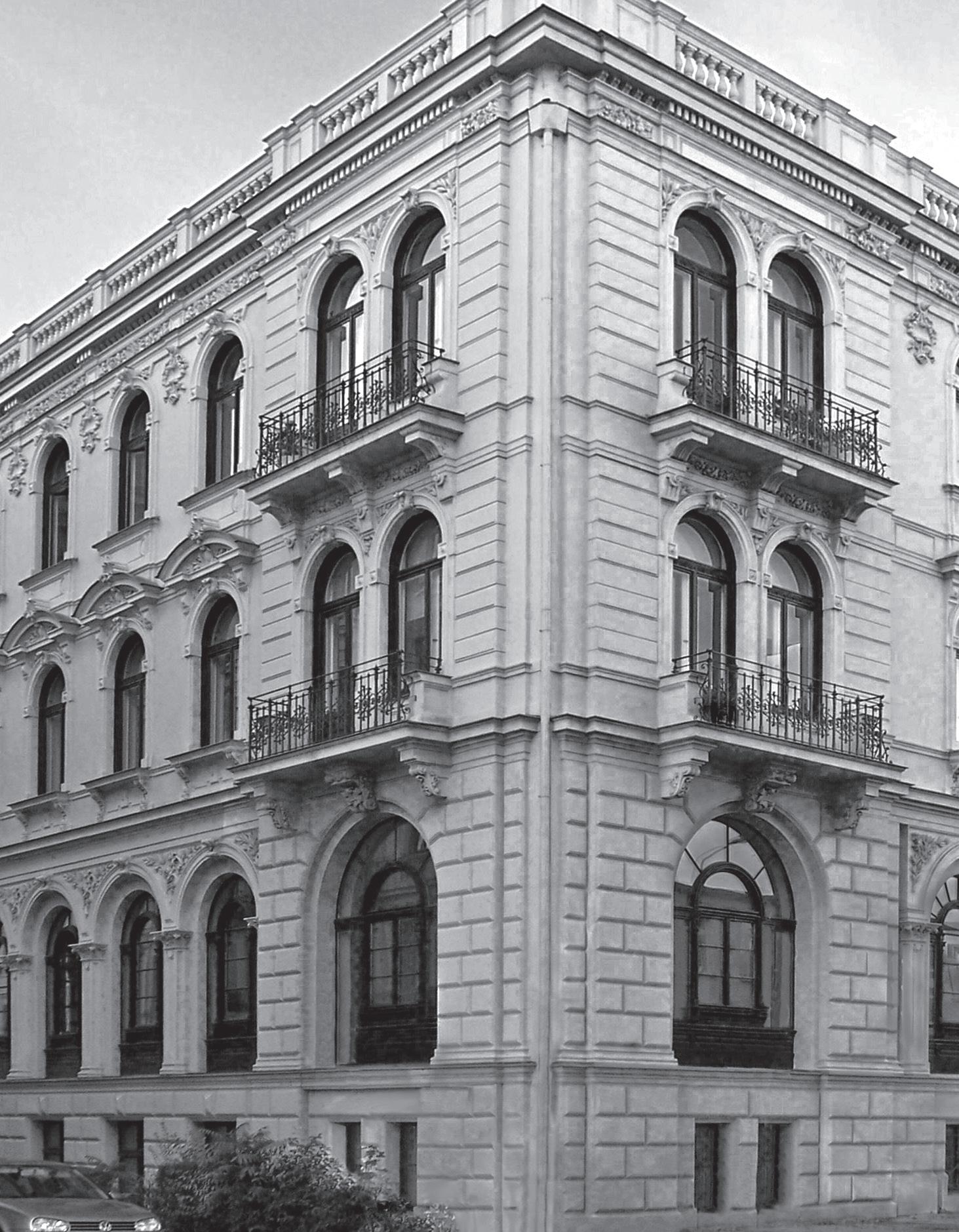
For more than 200 years, Edition Peters has been synonymous with excellence in classical music publishing. Established in 1800 with the keyboard works of J. S. Bach, by 1802 the company had acquired Beethoven’s First Symphony. In the years following, an active publishing policy enabled the company to expand its catalogue with new works by composers such as Brahms, Grieg and Liszt, followed in the 20th century by Richard Strauss, Arnold Schoenberg and John Cage.
Today, with its offices in Leipzig, London and New York publishing the work of living composers from around the world, Edition Peters maintains its role as a champion of new music. At the same time, the company’s historic and educational catalogues continue to be developed with awardwinning critical and pedagogical editions.
Seit über 200 Jahren steht die Edition Peters für höchste Qualität im Bereich klassischer Notenausgaben. Gegründet im Jahr 1800, begann der Verlag seine Tätigkeit mit der Herausgabe von Bachs Musik für Tasteninstrumente. Schon 1802 kamen die Rechte an Beethovens erster Sinfonie hinzu. In der Folgezeit wuchs der Katalog um neue Werke von Komponisten wie Brahms, Grieg und Liszt sowie – im 20. Jahrhundert – Richard Strauss, Arnold Schönberg und John Cage.
Als Verleger zahlreicher zeitgenössischer Komponisten aus aller Welt ist die Edition Peters mit ihren Standorten Leipzig, London und New York auch weiterhin Anwalt neuer Musik. Zugleich wird das Verlagsprogramm im klassischen wie im pädagogischen Bereich kontinuierlich durch vielfach preisgekrönte Ausgaben erweitert.